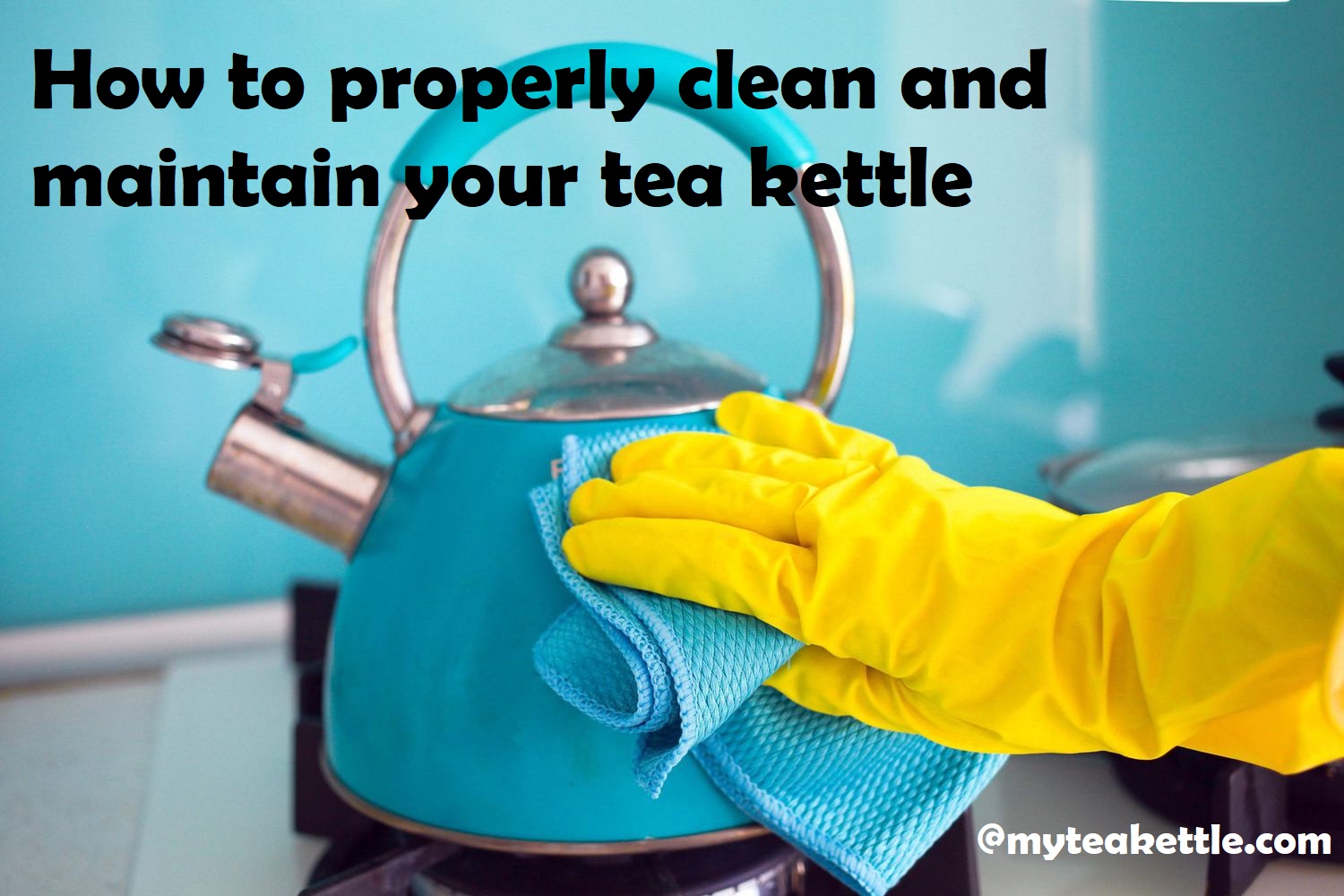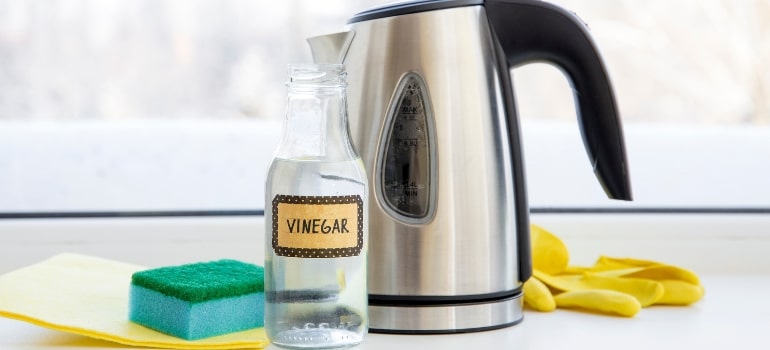Are you struggling to keep your tea kettle clean and well maintained? You can keep your tea kettle sparkling and in top condition with the help of this complete guide.
Learn how to remove limescale, rust, and other tea stains from your beloved tea kettle.
It may come as a surprise, but proper cleaning and maintenance of your tea kettle is a crucial step in ensuring safe, healthy drinking water. Tea kettles accumulate unwanted substances such as food particles and harmful bacteria from previous uses. Therefore, it is important to understand how to properly clean and maintain your tea kettle to ensure its effectiveness and safety.
This guide provides instructions for cleaning and maintaining your tea kettle, as well as information on choosing the right type of materials for brewing tea. With the proper care, you can enjoy safe drinking with your tea kettle for years to come.
Importance of cleaning and maintaining a tea kettle
Cleaning and maintaining your tea kettle is an important part of ensuring that you can enjoy years of flavorful use and a pot that looks as good today as it did when you purchased it. Keeping your tea kettle clean improves the flavor of your tea by eliminating deposits from minerals in the water and food residue from boiled beverages or teas.
Cleaning and maintaining your tea kettle is also necessary to remove bacteria, mold, and germs from forming inside the kettle or on its surface. Regular checks for rust, pitting, and breaks are necessary to maintain the safety of the user as well.
This guide will help ensure your tea kettle continues to be a part of your kitchen for many enjoyable years!
Benefits of a properly cleaned and maintained tea kettle
Having a properly clean and maintained tea kettle is important for a few reasons. First, by regularly cleaning and sanitizing your tea kettle, you can prolong its life span. Second, it helps keep your beverage tasting its best by removing any build-up of residue or dirt particles that can affect the taste. Thirdly, it helps to prevent water scale build-up inside the kettle, which can clog the spout and impair functionality. Finally, it allows you to clean other parts of the kettle such as the whistle and handle without risking breakage due to improper use of harsh cleaners or scratching tools.
Therefore, regular cleaning helps ensure that your tea kettle functions optimally over time while also providing a more pleasant beverage experience!
Materials Needed
Once you have made your decision on which type of kettle to purchase, the next step is gathering the necessary materials for cleaning and maintaining your tea kettle. In general, the items used must be non-toxic, gentle, and effective. The following are some of the most commonly used materials:
-Soft sponge or rag: For wiping away dirt and debris from the kettle’s exterior.
-Non-abrasive cleaner: For cleaning off water scale and addressing hard-to-remove stains like soap scum.
-Vinegar (white or apple cider): Popularly used to soften water scale buildup inside the kettle.
-Lemon juice: Can be used instead of vinegar to remove mineral deposits in a safe and natural way.
-Dry cloth: For drying off wet surfaces after using any of the above solutions for cleaning. This will also help prevent rusting on metal kettles when done correctly over a period of time.
Soft-bristled brush
Using a soft-bristled brush, scrub the interior and exterior of the tea kettle regularly to take away tea coatings and keep it grime-free. This will also remove any rust patches that may have formed over time, prolonging the lifespan of your tea kettle. Be sure to pay particular attention to any spots where limescale has formed, applying some elbow grease until the scale has been removed.
If you want an all-natural solution, fill your kettle with one part vinegar and two parts water before boiling and letting sit for an hour — this method of limescale removal can do wonders for an untended kettle.
Once you’re finished with the scrubbing, be sure to rinse out your tea kettle well with plenty of hot water after each use.
White vinegar or lemon juice
White vinegar or lemon juice are two common household items used as natural cleaners that can also be used to help maintain a tea kettle. Both white vinegar and lemon juice work wonders when it comes to removing hard water spots, lime deposits, and discolorations.
When using either of these natural cleaning agents, first fill the kettle with equal parts of white vinegar or lemon juice and water. Allow the solution to sit in the kettle for up to 30 minutes before draining it out and rinsing with cold water. For large accumulations of mineral deposits, let the solution sit overnight in order to more deeply penetrate the buildup.
To keep your tea kettle in good condition long term, wash it regularly between uses by hand with a mild dish soap. Be sure to remove any standing water from the interior after each use so that rust or mineral deposits don’t form inside over time.
Baking soda
Baking soda is an easy and natural cleaning agent to use when cleaning your tea kettle. To begin, mix a solution of equal parts water and baking soda and dissolve it in either a sink full of warm water or in a bucket. Submerge the kettle into this solution and let it soak for approximately 15 minutes before draining the sink or dumping the contents of the bucket.
After soaking, rinse off using just warm water and make sure that all baking soda residue is gone. For any remaining spots, use a non-abrasive sponge with mild dish soap to remove them before drying off with a clean dry cloth.
Water
When it comes to cleaning and maintaining your tea kettle, the most important aspect to consider is the water going into it. The acidic levels in the water will affect the outer shell of your tea kettle, so make sure you are filling it with clean water. Since tap water often contains minerals, it’s best to avoid using tap water if possible.
When preparing your tea kettle for use, always rinse out the interior with hot water before placing any leaves or herbs in it. This will help remove any residual sediment that may be left behind from previous uses.
When adding boiling water to your tea kettle, be sure to use a plastic measuring cup or spoon; metal utensils can cause unsightly discoloration on the outside of your teapot over time.
Lastly, when pouring out boiled-water from your tea kettle after steeping your beverage of choice, always discard the liquid slowly over multiple pours; do not pour all of the boiled-water at once as this could cause splattering and leave scalding-marks on or around the pot itself.
Dish soap
Using dish soap to clean your tea kettle is a quick and easy option, but it is important to run the kettle with water for 5-10 minutes afterward to ensure that all of the soap suds and residue have been removed.
First, fill your tea kettle with lukewarm water and add a few drops of dish soap. Place it on the stovetop and bring to a rolling boil. Allow it to simmer for 10 minutes, before turning off the heat. Let it cool down and empty out the soapy water, then rinse several times with clear water.
Be sure after cleaning with dish soap you sanitize your tea kettle by boiling plain water in it at least once.
Microfiber cloth
Using a microfiber cloth to clean and maintain your tea kettle is an excellent choice. Microfiber cloths are specially designed with small loops that allow it to remove trapped dirt and bacteria from the surface. A good way to use this type of cloth is to dampen it slightly with warm water, and then gently rub the dirt away. To avoid scratching or damaging the metal surface of your tea kettle, avoid using abrasive materials such as nylon scrubbing brushes.
If possible, use a non-abrasive cleaner like baking soda or mild dish soap. It’s also important to make sure you rinse off all cleaner thoroughly before drying with a microfiber cloth, as leftover residue can cause corrosion over time if not removed.
When you’re finished cleaning, be sure to dry the outside of your kettle thoroughly so that it retains its shine and luster for years to come!
Conclusion
Maintenance and proper care of your tea kettle is relatively simple. Regular cleaning to remove any build up of mineral deposits will help keep your kettle in good condition and help extend its life span.
There are several natural ingredients and techniques you can use to clean the inside of your tea kettle without using harsh chemicals or scrubbers that can damage the surface or corrode the metal. Taking some time each month to thoroughly clean and inspect your kettle for any surface damage or corrosion will help ensure that it continues to brew hot drinks for many years to come.
FAQ’s
What is the best way to clean a tea kettle?
One of the best ways to clean a tea kettle is by using a mixture of vinegar and water. Fill the kettle with equal parts water and vinegar and let it boil. Then let the solution sit for a few hours before pouring it out and rinsing the kettle thoroughly with water.
How often should I wash my tea kettle?
It is recommended to wash your tea kettle once a week to prevent buildup of mineral deposits and bacteria.
What is the best way to clean a stainless steel tea kettle?
To clean a stainless steel tea kettle, you can use a mixture of baking soda and water or a stainless steel cleaner. Apply the cleaner, scrub gently, and rinse thoroughly with water.
How do you clean an electric tea kettle?
To clean an electric tea kettle, you can use a mixture of water and vinegar or a kettle descaler solution. Fill the kettle, boil the solution, let it cool, and then rinse thoroughly.
How do you maintain a kettle?
To maintain a kettle, make sure to clean it regularly, descale it when needed, and avoid overheating it. Also, don’t let water sit in the kettle for long periods of time.
Should I leave water in my tea kettle?
It is not recommended to leave water in your tea kettle for long periods of time as it can lead to mineral buildup and bacterial growth.
How do I get rid of bacteria in my kettle?
To get rid of bacteria in your kettle, you can boil a solution of water and vinegar, let it cool, and then rinse thoroughly with water.
How do I prevent limescale in my kettle?
To prevent limescale buildup in your kettle, you can use filtered water or descale it regularly with a solution of water and vinegar or a kettle descaler solution.
Can we use oil in electric kettle?
No, you should not use oil in an electric kettle as it can damage the heating element and potentially cause a fire.
How do you clean a tea kettle without vinegar?
You can clean a tea kettle without vinegar by using a mixture of baking soda and water, lemon juice and water, or a specialized kettle cleaner. Apply the solution, scrub gently, and rinse thoroughly with water.
See Also-
- Best gooseneck kettle
- Best tea kettle for glass cooktop
- Best tea kettle for gas stove
- Best solar kettle
- Best stainless steel tea kettle

